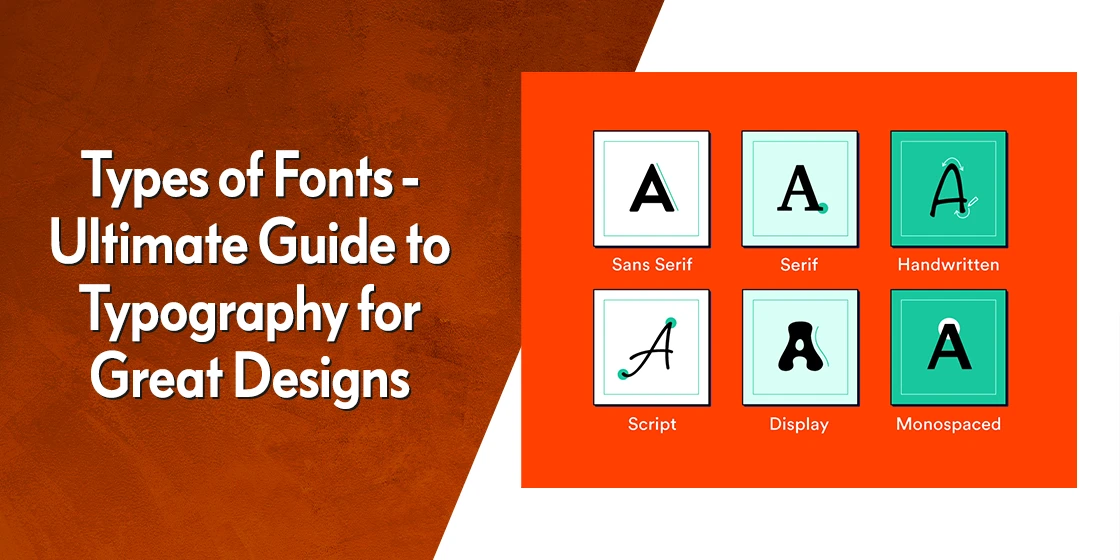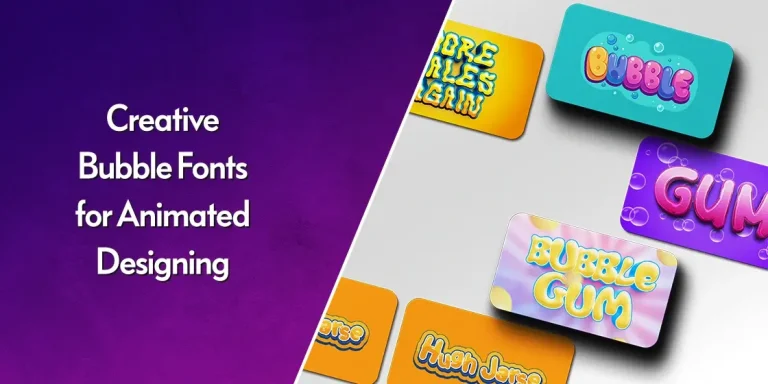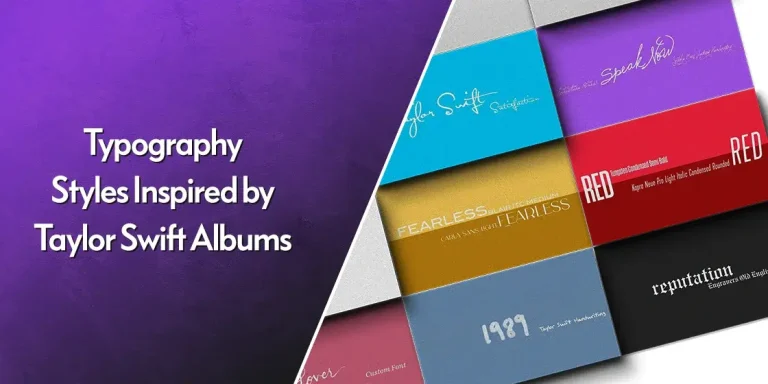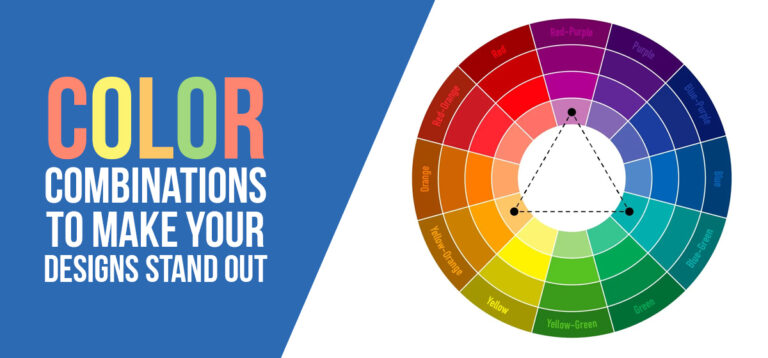
Table of Content
How to Use the Different Types of Fonts and Styles to Give Your Design Some Flair
The design world revolves around visual communication, and typography plays a starring role in it. Choosing the right font can elevate your design from good to great, influencing how viewers perceive your message. And with a number of different types of fonts to choose from, designers are spoiled for choice when it comes to finding the right typographic style.
Or are they?
You may see this massive choice as a positive. However, the more options there are, the higher the chance that you will choose the wrong one. And while your choice of font may look like a small one compared to the other design element, it is one of the most critical ones too. So, the question remains – how do you choose the right style of font for your designs?
Similar to how writers ensure originality in their work when they check plagiarism online, designers must also ensure their font choices are purposeful and not just trendy imitations lacking in context.
Join us as we dive into this comprehensive guide to understand the fascinating world of fonts. We will also explore how a professional graphic design agency would use these fonts, to equip you with the right experiential knowledge needed to make great font choices every time.
Unveiling the 8 Major Types of Fonts – Preparing Your Typographic Toolbox
Now, fonts come in many styles and shapes. When talking about types of fonts, we can broadly categorize them into eight basic groups, each with its own distinct personality and purpose. This demarcation is based on their specific design styles rather than their preferred application, which means that a font family can have both logo fonts and display fonts in the same family.
However, before we get to choosing our preferred fonts and typographic styles, understanding these categories is the first step to accomplish that successfully. Here are the eight types of font styles that you can use in your designs today.
Serif Fonts

Serif fonts are characterized by small decorative strokes at the ends of their characters, adding a touch of elegance and formality. The serifs denote the definitive ending of a character, allowing our minds to register it more clearly than sans serif typography. That is why they are often considered easier to read for extended lengths of text.
Sans Serif Fonts

Clean and modern, sans serif fonts do not have the decorative strokes of their serif counterparts, making the serif vs sans serif fonts debate regarding which is more formal quite enjoyable. These fonts offer a sleek and contemporary aesthetic, which makes them perfectly suited for headlines, web design, and minimalist layouts.
Script Fonts

Evoking the elegance of handwriting, script fonts are perfect for adding a touch of personality and informality to your designs. These can take a variety of styles, from graffiti, penmanship, brushstrokes, and more like baseball fonts. However, their intricate nature means that readability can be lower for extended lengths of text.
Handwritten Fonts

Handwritten fonts are a type of script font that mimic actual handwriting, offering a more personal and effective touch. This style of fonts is perfect for applications like for invitations, greeting cards, and playful designs, and even as signature logos. However, for purely formal situations or large blocks of text, it may not be the best choice.
Calligraphic Fonts

Inspired by the art of calligraphy, whether it’s eastern, western, Arabic, or any other type, these fonts exude an aesthetic of sophistication and formality often found in that of vintage fonts. They are often designed to be intricate and decorative, making them ideal for logos, wedding invitations, and certificates.
Decorative Fonts

As the name suggests, decorative fonts prioritize visual appeal over legibility, and are designed to be visually striking. These fonts are often over the top, like overly futuristic fonts, and contain design flairs that make the typography a work of art. They can be playful, whimsical, or even grungy, adding a unique touch to headlines, posters, and display text.
Display Fonts

Bold, eye-catching, and often quite large, display fonts are designed to grab attention. These masculine fonts are perfect for headlines, posters, and logos. However, they might not be suitable for large blocks of text due to their readability and space limitations.
Monospaced Fonts

Monospaced fonts are an interesting bunch that have been carried forward from the time of typewriters. These fonts have a fixed, equal width for each character, creating a uniform look, no matter if the text contains a mix of uppercase or lowercase letters. These can be great for minimalist impact, and can be some of the best fonts for business cards if a plain and no-nonsense vibe is what you are going for.
Often used for code snippets, typewriter effects, and tabular data, they are not ideal for general text due to their lack of variation, as well as visual limitations. Imagine the letters A and M having the same character width. Which one would be more legible?
Transform Your Business with Professional Logo and Branding Services
Revamp My Brand
Types of Font Styles in Serif Fonts and Their Popular Options
Now that we have seen the top categories and types of fonts, let’s take a look at some of the top categories and their variations or subtypes. Let’s start with serif fonts. The world of serif typography offers a vast spectrum of types of font styles. Here’s a closer look at some of them.
Vintage Serif Fonts

These fonts evoke a sense of nostalgia, reminiscent of classic typewriters and early printing presses. Imagine an antique book with elegant Garamond typeface, or a vintage advertisement with bold Bodoni lettering. Times New Roman, with its familiar serifs, brings a touch of tradition to any project.
Modern Serif Fonts

Offering a sleek and contemporary take on the classic serif style, these fonts combine tradition with a modern aesthetic. Didot, with its sharp lines and dramatic contrast, adds a touch of sophistication to a fashion magazine layout. Source Serif Pro, with its clean lines and open forms, enhances the readability of a website’s body text, while Playfair Display’s elegant curves create a visually appealing logo.
Transition Serif Fonts

These fonts bridge the gap between traditional and modern serif styles, offering a touch of elegance with a hint of modernity. Georgia, a versatile font with well-defined serifs, is a popular choice for body text in web design. EB Garamond, inspired by the classic Garamond typeface, offers a slightly more modern interpretation with its clean lines. Merriweather’s elegant curves and open forms make it ideal for lengthy text passages in books or brochures.
Slab Serif Fonts

Bold and impactful, slab serif fonts feature thick, blocky serifs that make a statement. Rockwell, with its bold presence, is perfect for grabbing attention on a movie poster. Klavika’s clean lines and geometric serifs add a modern edge to a website banner. Museo Slab’s robust look makes it a great choice for a restaurant menu or a product packaging design.
Types of Font Styles in Sans Serif Fonts and Their Amazing Examples
Now if you want something sleeker and minimalist, then sans serif fonts offer a variety of options to suit your design needs. And like the serif fonts we have seen above, they too offer a few subcategories to choose from. Let’s take a look.
Grotesque Sans Serif Fonts

Their simple, almost geometric shapes characterize these grotesque sans serif fonts. Arial, a familiar font used in countless documents, offers clean lines and high readability. Helvetica, another widely used font, is known for its neutrality and versatility. Proxima Nova, with its slightly condensed letterforms, adds a touch of modernity to a minimalist website design.
Geometric Sans Serif Fonts

As the name suggests, these fonts utilize geometric shapes as their foundation. Futura, with its circular shapes and clean lines, evokes a sense of futurism. Futura Bold makes a bold statement on a product packaging design. Avant Garde Gothic, with its sharp angles and unconventional shapes, adds a touch of edginess to a poster or magazine layout.
Humanist Sans Serif Fonts

These fonts offer a more organic and handwritten feel compared to other sans serif styles, making them a great choice for typography book cover design. Verdana, with its slightly curved shapes, improves readability on screens, making it a popular choice for websites. Gill Sans, with its humanist touch and clean lines, adds a touch of personality to a branding project. Open Sans, known for its warmth and readability, is a versatile choice for body text across various design applications.
Types of Script Fonts and Some Great Options You Should Use From Them
Besides serif and sans serif typefaces, script fonts are highly popular among designers, and come in various styles with each offering a unique personality. Let’s take a look at some of the most popular of its subcategories.
Formal Script Fonts

Formal script fonts embody elegance and sophistication, often reminiscent of fine calligraphy. Constantia, with its flowing curves and fine lines, adds a touch of formality to a wedding invitation. Sacramento, with its dramatic flourishes, creates a statement on a luxury monogram logo design.
Casual Script Fonts

The casual script fonts offer a friendly, lighthearted, and informal feel, perfect for invitations, greeting cards, and playful designs. Lucida Handwriting, with its loopy characters, adds a personal touch to a handwritten note. Pacifico, with its playful curves, brings a touch of whimsy to a children’s book illustration.
Calligraphic Script Fonts

Inspired by the true art of calligraphy, these fonts exude a touch of sophistication and historical elegance. While formal scripts look like derivations of calligraphy, calligraphic fonts offer the true essence of that to their users. Scriptina, with its dramatic flourishes and intricate details, creates a beautiful wedding invitation. Lobster, with its bold curves and playful details, makes a statement on a restaurant menu.
Handwritten Script Fonts

Handwritten fonts mimic actual handwriting with all of its inconsistencies, offering a personal and casual touch. Brush Script, with its textured strokes, creates the illusion of hand-painted lettering on a poster. KG Feeling Spicy, with its playful loops and swashes, adds a touch of fun to a social media post.
Examples of Display Fonts That Represent the Aesthetic of These Types of Font Style

Finally, lets talk about display fonts. Display fonts are all about grabbing attention, and as their name suggests, are mostly used for display purposes on billboards, posters, and signs. Here are some popular examples of display fonts that can be a great addition to your typographic quiver.
- Big Noodle Titling: This playful and bold font is perfect for creating eye-catching headlines and posters.
- Black Chancery: This elegant and decorative font adds a touch of sophistication to logos and invitations.
- Impact: This bold and impactful font makes a statement on website banners and marketing materials.
- Rockwell Bold: This robust and attention-grabbing font is ideal for movie posters and product packaging.
- FFF Tusj: This playful and handwritten font adds a touch of whimsy to social media posts and branding projects.
FAQs
| What are the four major types of fonts? The four major types of fonts include: Serif fonts Sans serif fonts Display fonts Script fonts |
| What types of fonts are the best for me? Different styles of fonts and typography are designed for various purposes. The best style of fonts for you depends on your need and purpose. Depending on what you need those fonts for, your choice can vary between all major types of font styles. |
Conclusion
The world of fonts offers a vast playground for your creativity. By understanding the different types of fonts and their psychological impact, you can select options that not only enhance the visual appeal of your design but also effectively communicate your message. Remember, the “right” font depends on your specific project goals and target audience. So, explore, experiment, and have fun creating designs that speak volumes!

Logopoppin
Logopoppin is a graphic design agency that specializes in logo designing, web development, video production and advanced branding services. We love to innovate businesses with new age technologies, allowing them to improve their visual reputation.



